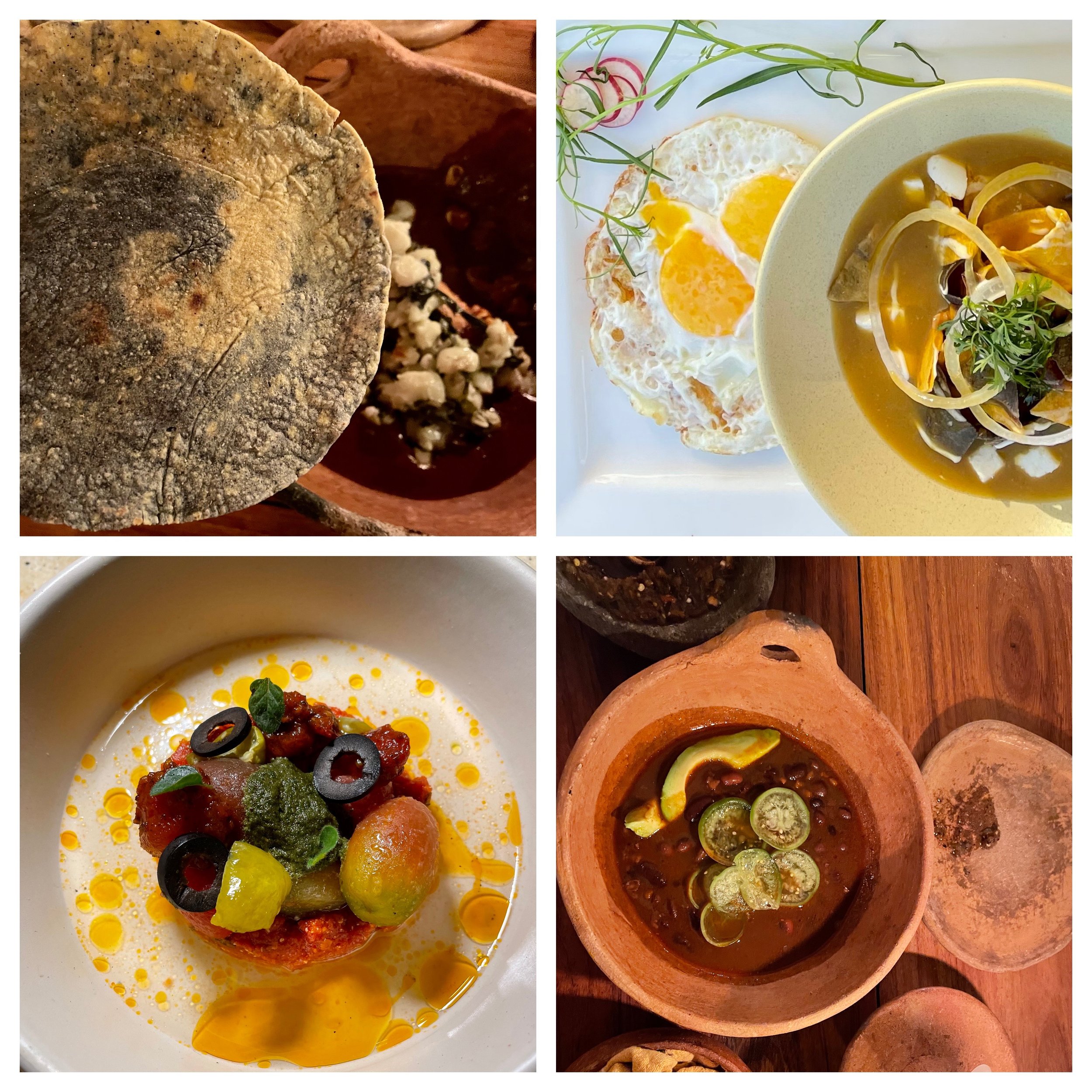Oaxaca
Carmen SanDiego, mi amiga de… como se dice… junior high, the same friend I visted last month in Mexico City, was planning a fun shopping trip to Oaxaca, MX and naturalmente, I invited myself along. I’d never been to that part of Mexico and my friends here told me that Oaxaca is “easy on the eyes”. They were not wrong.
Oaxaca as a state is super diverse pretty much in every regard - there are lots of indigenous languages still spoken here, the biodiversity of animal and plant species is very high, the topography and microclimates vary a lot between the mountains and valleys and tropical beaches on the Pacific side.
From wikipedia “There is evidence of human habitation in Oaxaca from 11,000 years BC. This area was recognized as a UNESCO World Heritage site in 2010 in recognition for the earliest known evidence of domesticated plants in the continent, while corn cob fragments from the same cave are said to be the earliest documented evidence for the domestication of maize. By 2000 BC, agriculture had been established in the Central Valleys region of the state, with sedentary villages. The diet developed around this time would remain until the Spanish Conquest, consisting primarily of harvested corn, beans, chocolate, tomatoes, chili peppers, squash and gourds.”
The geology is also unique including this green rock they call Cantera – it was used for the church buildings, zocalo plaza and sidewalks once you know what you are looking for you see it everywhere in Oaxaca. It is super interesting in that sometimes it looks pink and sometimes it looks jadelike green depending on the light. As you know I am just learning Spanish. I had zero ability to retain the name of this rock I asked for it to be repeated many times. FYI cantera is the Spanish word for quarry.
CASA art center former factory in Etla, Iglesia de la Soledad Vista Hermosa, Archivo Historico del Estado de Oaxaca, Templo Santo Domingo
We visited the Ethnobotanical Gardens where we learned about some very important agricultural products that originated in the central Oaxaca valleys including squash, corn and chiles. Yes there are thousand and thousand of uses for corn all of which I’ll tell you about right now.
We also learned about cocineal which is this little bug that is used to make Campari red. This scale infects the nopales cactus and when the bugs are smooshed a red pigment comes out – Carmine Red. Back in the 16th century this was used for artist’s paint pigment, today it is used in cosmetics and food dye. https://www.wired.com/2015/09/cochineal-bug-feature/
Jardín Etnobotánico de Oaxaca
As a celiac, I have a deep, deep appreciation for corn (and rice too but that’s another story). The corn I tasted in Oaxaca had flavors so distinct and delicious and wholly different from the terrible plastic package of tortillas I buy at the grocery store and then burn (gotta get that color) on my cast iron here in Seattle. Textural differences, flavor differences … some varietals of corn are best suited for tostadas, some are best for masa for tamales, some for posole, some for the tlyaduas, tetelas, memelas, sopes etc.
Levadura de Olla tortillas and mole fiesta, Tierra del Sol chilequiles in mole amarillo with eggs, Prehispanic style bean soup, Tomato soup at El Destillado
Comal at Tierra del Sol
Fun drink at Selva Bar
Stay tuned for more details of my adventures including a visit to the ruins at Monte Alban, artisan workshops for textiles and pottery and the Dia Beacon-like modern art center in an old factory building in Etla called Casa des Artistes San Augustin.
Here’s a list of restaurants we visited all of which I would recommend - muchisimas gracias to Chris Upchurch, Renee Erickson, Carrie Omegna, and Ashley Trout for their pointers.






